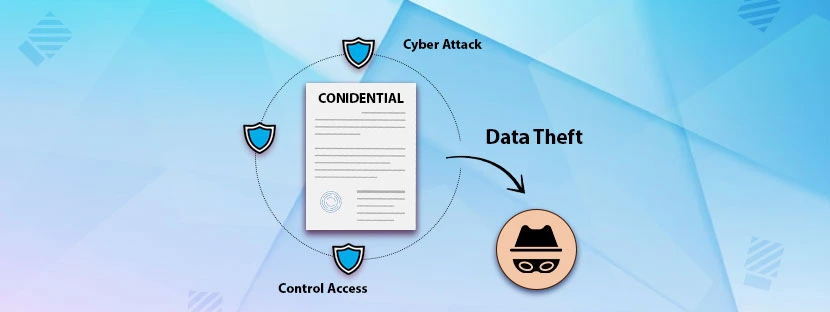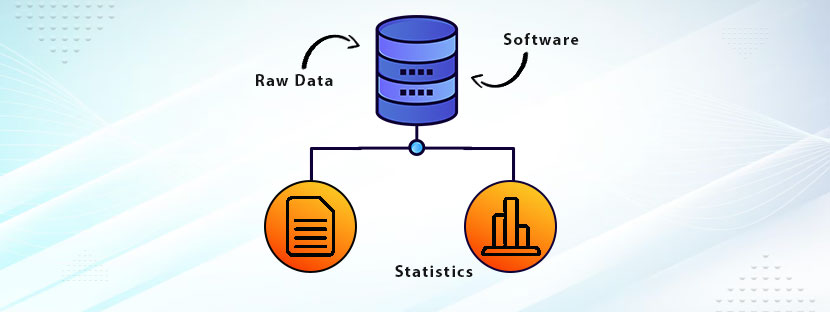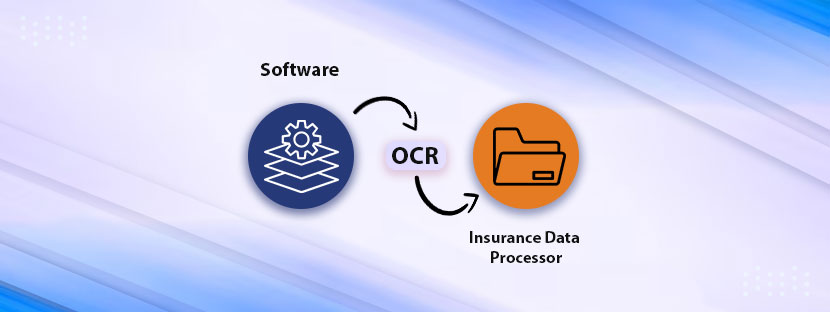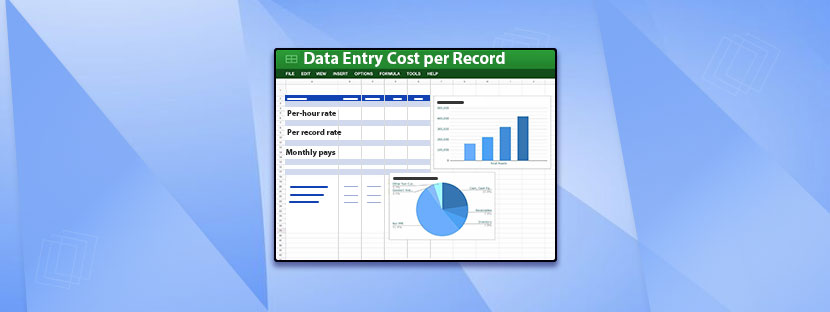In This Article
Can you guess how many people were affected due to data theft incidents globally? The figure is 422.1 million, and it has increased over the years. Human elements have caused the majority of these incidents and impacted the overall servers. Companies across the globe are now taking these incidents seriously and have adopted Data Theft Protection measures.
But how does a data theft incident take place? Well, transferring and storing any confidential data illegally comes under data theft incidents. Confidential data include financial information, personal information, business information, etc. confidential data stored in computers or virtual databases as passwords, codes, and algorithms.
Theft of confidential data is a crime and thus strict penalties are there to prevent these incidents. The government and various organizations stressed more on keeping the data safe by incorporating proper protection measures. Therefore, businesses must choose trusted data entry experts while outsourcing their needs.
What if data theft incidents have already taken place in an organization? To reveal this answer, this blog aims to discuss preventive Data Theft Protection measures. Also, it will throw light on some steps that you need to do after a data theft incident takes place.
1. Increasing Data Theft Incidents are Concerning
The growing number of data theft incidents is concerning and it’s creating tension in the business world. Investing in data safety measures becomes essential for every business to keep their data safe at this moment. Besides data theft protection capabilities, you have to follow some practices to keep your data secure and safe.
The chances of data theft will increase if the system is not updated in a while. Hackers, those cracks codes to gain computer access, track the system by measuring the old patterns. Therefore, updating the security protocol of your system is essentially crucial and you cannot compromise on these aspects.
Using the updated Data Theft Protection system with the latest version of the software can prevent hackers from entering your system. Sometimes switching systems can also increase the chance of data breaches. While relying on the same system also increases data theft chances. So what is the ideal way to protect your data?
Well, you need to incorporate the best things of technology from system to system to get the best security features. For instance, you can replace password data protection with biometric protection to keep your database safe from unauthorized use. Added to this, keeping a tracker of the system access also helps in data loss prevention and security threats.
2. What is Data Theft Prevention & Data Theft Types
Data theft can be different types and each type represents a new area that your business needs to check. These types are continuously increasing with the coming of new variations of data breaching incidents. Here are some common types of data theft notices in the system explained.
2.1 Physical Data Loss
Not only the paper files but data stored in computers, laptops, and mobile phones are physical data. Previously, business organizations used to store data in hard discs and keep them safe in storehouses. These all data stores are part of physical data storage and the chances of data theft are high here. Hence, adopting Data Theft Protection measures is a need of the hour for this storage.
Data stored in physical devices can be lost or stolen easily and they do not have any backup. Except for a few, the authentication system is not strong on these physical devices. Therefore, there is a high chance that the data reaches the wrong hand. The integrity of the data will be compromised if the data gets stolen from these devices.
2.2 Cyber Attack
If the data is leaked virtually with the input of a hacker or malware then it would considered a cyber attack. Hackers usually apply codes and machine language to get familiar with the targeted database. They attack the system if they find any clue in the database as per their techniques.
Sometimes hackers enter the database via the help of malware and other cyber-attacking tools. Phishing is a common element in which hackers track the system. Similarly, hackers use other ways like Social Engineering, Skimming, etc to enter the system. After entering the system, they steal information from the database.
2.3 Theft by Employees
Unfaithful employees sometimes leak vital data when they leave the organization. In many cases, crucial business information of the company leaks via employees. They leak data for their gains but that impacts the overall organization’s success. Having a Data Theft Protection mechanism is important to prevent these incidents.
2.4 Accidental Exposure
The term “accidental” itself reveals the meaning of this data theft incident. Generally, this kind of data theft incident happens when companies switch platforms to store the data. Storing the data in the cloud involves risks of data theft because of the openness of the system.
For instance, when a company switches its database from a physical location to a digital space, it chooses the cloud system. The Cloud system coordinates the data transition journey smoothly and facilitates data privacy and data protection features. However, without a premium version, the cloud system cannot provide data security measures. Therefore, during the transition, the incident of data leak can take place.
2.5 Negligence
Human mistakes, negligence of the employee, not taking measures on time, etc can cause data theft. Sometimes small incidents of data breaches become huge and it happens because of negligence. However, with strong Data Theft Protection measures, these issues will not come. Besides providing more security, it also eliminates human errors efficiently.
3. How to Ensure Data Theft Protection – Tips
Preventing data theft is about building strong defenses, educating yourself and others, and staying vigilant. Applying these simple tips can create a robust shield around your personal and sensitive information. Remember, data loss prevention is an ongoing effort, but with these steps, you’re well on your way to a safer digital space.
3.1 Encrypt Your Data
Think of encryption as a secret code for your data. Use strong encryption methods to make your information unreadable to anyone who shouldn’t have access. This goes for data moving between devices and data stored on them. Regularly update your encryption methods to stay ahead of potential threats.
3.2 Control Access
Imagine a fortress with a gatekeeper – that’s what you want for your data. Set up strong access controls using things like passwords and multi-factor authentication. Regularly check who has permission to access your information and remove any unnecessary access. With proper Data Theft Protection measures, you control who gets through the gates.
3.3 Educate Employees
People are a crucial part of the defense against data theft and reducing data integrity risks. Educate yourself and others about common tricks, like phishing emails, and the importance of strong passwords. So, creating a culture where everyone is aware and cautious makes it harder for data thieves to succeed. Trust data theft protection capabilities for developing this culture.
3.4 Keep Physical Papers Safe
It’s not just about digital locks – physical security matters too. Keep your devices in safe places, use secure storage for important papers, and limit access to areas with sensitive information. This prevents someone from physically getting hold of your data.
3.5 Have a Data Backup Plan
Imagine making a copy of your favorite photo so you never lose it. Apply the same principle of Data Theft Protection to your data. Regularly back up your important information, so that if something goes wrong, you can quickly restore it. This helps you avoid losing valuable data during a security incident.
3.6 Install a Monitoring System
Picture a security guard watching over a building. You need a similar guard for your data. Use monitoring systems that can alert you to any unusual activities. This way, you can spot potential threats early and take action before they cause harm.
3.7 Collaborate with Experts
Sometimes you need a superhero to help you out. In the world of data protection, these superheroes are cybersecurity experts. Collaborate with them to understand the latest threats and get advice on how to stay safe. It’s like having a personal guide in the ever-changing landscape of online security.
3.8 Change WiFi Passwords Frequently
Your Wi-Fi is like the door to your digital office. Secure it with a strong password and encryption. Change the default login details for your Wi-Fi router to avoid easy access. Regularly update your Wi-Fi software to patch any weaknesses. This ensures that only trusted devices can connect to your network. Using proper Data Theft Protection measures, you can easily implement all these factors.
3.9 Use DLP Tools
Think of Data Loss Prevention (DLP) tools as guardians for your information. These tools can stop your data from being sent out without permission. Therefore, customize them to fit your needs and keep an extra layer of protection against data leak incidents.
4. Data Theft Occurred! – What to Do?
It’s unfortunate! that your organization detects a data theft incidents. But ensuring the safety of your data is your prime responsibility at this moment. Despite this, data theft incidents are increasing at a rate of 41.5% each year. Every organization might face some data security issues in the future.
However, after the data theft incident has taken place, you need to do these following this first.
4.1 Identify and Prevent it
The first thing is you have to identify and acknowledge the data theft incident. After your consideration, the next step is to stop the data breach. You need to immediately stop the unauthorized practice and focus on recovery. You can shut down the compromised system for a while till you understand the breach.
Besides shutting down, you can also verify the Data Theft Protection mechanism of your organization again. Weakness of the physical storage can harm the digital database. Thus, you have to make the physical storage efficient with appropriate measures. Along with this, you can change the codes of your computer access immediately.
4.2 Estimate the Damage
Evaluation of the damage is very crucial at this stage to prevent the data theft incident in the future. You can identify the pattern of data theft if you keep evaluating the damage at this point. So, you need to investigate the affected system closely for a better understanding of the data theft. Detecting the malware that was used in attacking your system is a very good area to start with.
Besides, you need to identify the exact pattern of the attack vector and determine the sensitivity level of the attack. Evaluate the risk of data theft and its impact on the company. Checking what type of data has been lost will help the company come up with a better Data Theft Protection plan.
4.3 Change Passwords and Logins
Using a password manager tool, you need to change all login credentials, passwords, etc immediately. A password manager will help you replace all your passwords quickly and provide strong security for your passwords. You do not have to remember each password individually only the master password.
However, protecting login credentials and passwords with a password manager tool involves risk. Once the master password gets traced the hackers can easily gain all access to your system. Besides password manager, you need to focus on security Q&A also. It is better to put an extra lock in providing using a two-factor authentication system. It will help you develop data theft protection capabilities to fight the data breach.
4.4 Initiate Security Audit
Auditing the data security measures is essential in adopting a Data Theft Protection plan. Besides that, it will help companies to understand the weak points where the data has been leaked. In short, the security audit will identify the path in which the data has been stolen from the system.
4.5 Notify People
The final step is altering people about the data theft incident. You can release a notification regarding the data theft incident immediately after you realize the data leak incident. This will allow the stakeholders to know how to prevent data theft.
5. Building Data Security and Theft Prevention
Implementing a proper Data Theft Protection plan can save your system. Data theft has not remained just a concept but is a reality now. You cannot let your system open without security measures. When you outsource services you need to choose those companies that have adopted strong data integrity and safety measures. Only this way, you can prevent your data from leaking.
Read Also: How to choose a data processing company to secure your data











